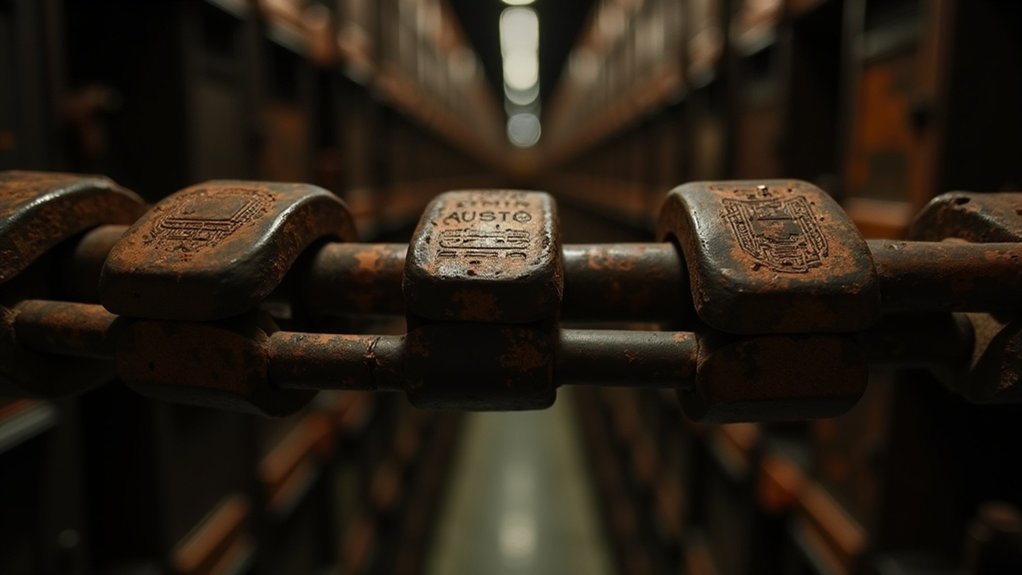Selling crypto nodes isn’t rocket science, but it requires strategy. Start with clear documentation of technical requirements and rewards. Price low initially, then increase to create urgency. Announce sales publicly with detailed timelines and eligibility criteria. Provide user-friendly installation packages and accessible support. Security is non-negotiable—use platforms with Clear Signing for transaction transparency. The crypto node market changes fast; adaptability is key. Successful projects need solid fundamentals, not just hype. The rest of this guide unpacks everything you’ll need.
Breaking into the crypto node market isn’t rocket science, but it’s not child’s play either. Nodes form the backbone of blockchain networks—servers that validate transactions and maintain network integrity. Some are full nodes, some validators, others masternodes. Each blockchain has its rules. Each node type its purpose. And yes, they can make money.
Before selling nodes, understand what you’re actually selling. Usually, it’s a license—the right to operate a node and earn rewards. These licenses often come with a non-transferable period. Months. Maybe a year. During this time, buyers are stuck with their purchase. Deal with it. Compliance matters too. KYC/AML verification isn’t optional; it’s mandatory. Skip this step and watch regulators come knocking.
When selling nodes, you’re selling licenses with lockup periods. No transfers allowed. No KYC shortcuts. Regulators don’t play games.
Pricing requires strategy. Start low. Increase gradually. Create urgency. Nobody buys when they think prices will drop tomorrow. Document everything—technical requirements, benefits, rewards. These consensus mechanisms determine how nodes participate in transaction validation. Buyers need to know what they’re getting into. Then announce publicly. Timelines. Benefits. Eligibility. Be crystal clear.
The sales process follows a predictable pattern: announcement, registration, purchase, setup, activation, support. Each step matters. Each step needs planning. Software installation packages should be idiot-proof. Even your tech-challenged uncle should be able to follow along.
Where to sell? Options abound. Dedicated platforms. Your own website with smart contracts. Established exchanges. Some projects even use tiered sales models—just like those ICOs from the good old days. Remember those? Half of them crashed and burned. Learn from their mistakes. For enhanced security, consider platforms like Ledger Live that offer Clear Signing features displaying transactions in plain language. Successful projects like XAI, Aethir, and Sophon have raised over 220 million dollars collectively, setting a high standard for node sales.
Technical considerations can’t be ignored. Security isn’t negotiable. Uptime requirements matter. And for heaven’s sake, provide decent dashboards. Nobody wants to operate a node blindfolded.
The node market is evolving rapidly. Projects with solid fundamentals and realistic reward structures survive. The rest? They fade into obscurity. Just another crypto experiment gone wrong. Don’t be that project. Build something real. Something lasting. Something that actually works.
Frequently Asked Questions
What Tax Implications Should I Consider When Selling Crypto Nodes?
Selling crypto nodes triggers capital gains taxes. Period. The IRS isn’t messing around here.
Nodes sold within a year? Short-term gains taxed at ordinary rates—up to 37%. Holding longer pays off with reduced long-term rates of 0-20%.
Every sale, swap, or conversion counts. Even crypto-to-crypto.
Mining rewards? That’s ordinary income when received.
Record everything. The IRS has blockchain analysis firms now. They’re watching. Seriously.
How Do Node Performance Metrics Impact Resale Value?
Node performance metrics are pricing kingmakers, plain and simple.
Break-even calculations and token reward quantities directly correlate with higher resale values.
Early-tier nodes? Gold mines compared to later purchases.
Transaction volume matters too—busy networks mean valuable nodes.
Low operating expenses translate to better profit margins, making nodes more attractive.
Network speed and scalability? Critical.
Nobody wants a dinosaur node on a congested network.
Bottom line: solid metrics equal premium resale prices.
Can I Transfer Node Ownership Without Disrupting Service?
Yes, node ownership transfer can happen seamlessly. The blockchain doesn’t care who’s at the controls—just that the right keys are used.
Transfer involves securely moving private keys and credentials while the node keeps running. Smart contracts can automate the process. Keys must be shared through encrypted channels, not sketchy public networks.
Documentation and coordination are vital. Most transfers work without a hiccup if both parties communicate well and follow security protocols. No drama necessary.
When Is the Best Time to Sell a Crypto Node?
The ideal time to sell a crypto node? During market peaks, roughly 500 days post-halving events.
Weekends bring lower Ethereum gas fees—a sweet bonus for sellers.
Smart players don’t go all-in though. They sell incrementally.
Network congestion matters too. Nobody wants to pay ridiculous transaction costs.
And those U.S. business hours? Avoid them like the plague.
External factors throw curveballs constantly. Regulatory announcements, tech updates—they all shake things up.
Timing is everything. No crystal balls here.
Are There Specialized Marketplaces for Selling High-Performance Nodes?
Yes, several specialized marketplaces exist for high-performance nodes.
Blockdaemon offers a P2P marketplace supporting 50+ chains. Ankr runs platforms for 30+ networks with various access models.
Pokt Network provides a decentralized API network—less reliable but more decentralized. QuickNode delivers enterprise-grade infrastructure across 75 chains.
These platforms typically offer tiered pricing models from free limited access to premium subscriptions.
Each has its own strengths. Not all publicly disclose their pricing though.









